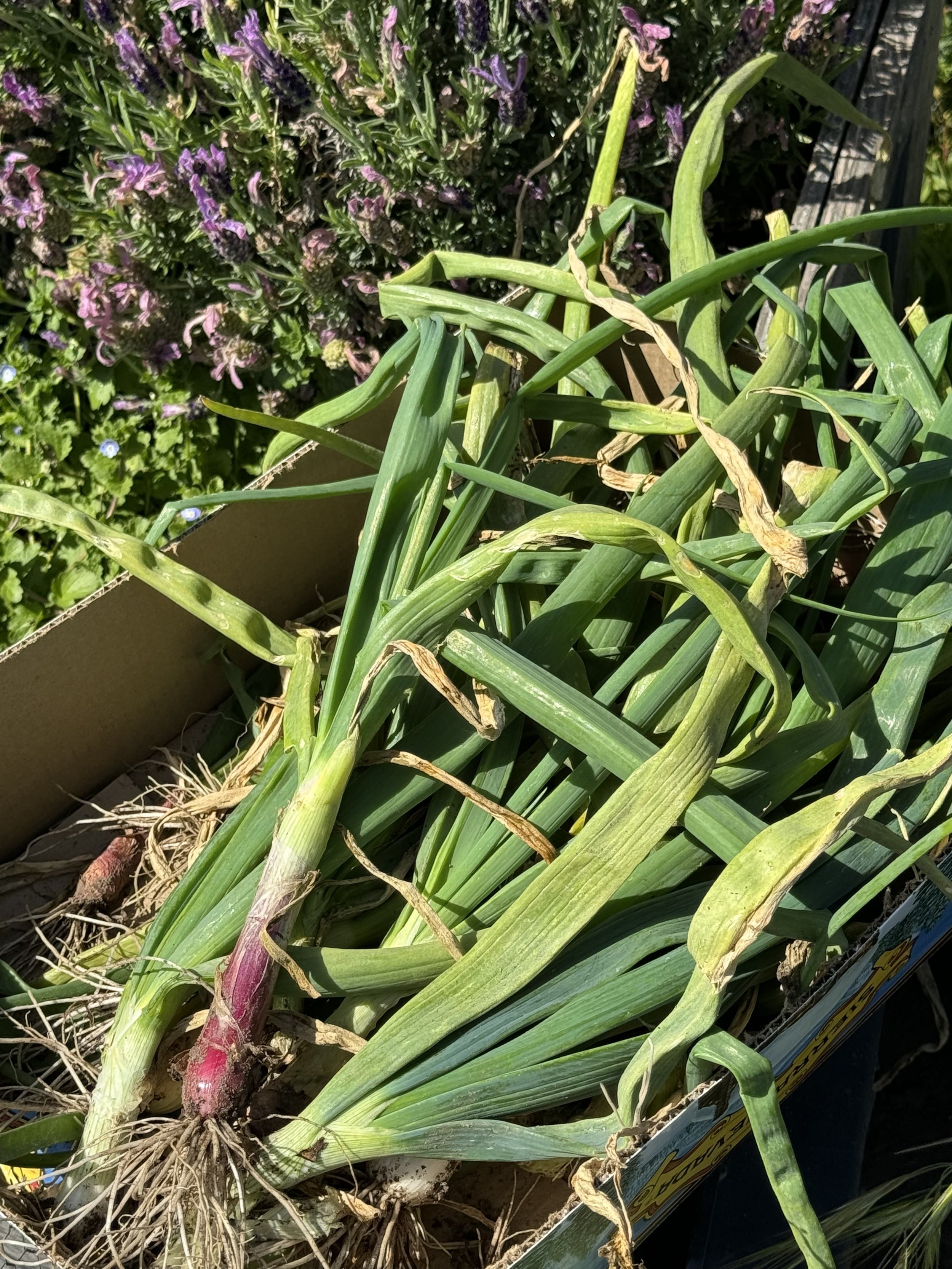Garden: Growing Onions in the Spring
By Samridi Iyer
GGG Garden’s green onions!
The GGG Garden recently had our very first harvest of green onions, and we couldn’t be more excited to share our process, takeaways, and tips to help you grow your own onions.
The most important part of successfully growing onions is to make sure your soil is rich in nutrients, well-draining, loose, and has enough depth for onions to grow and expand in. The best way to prep your soil is by buying organic soil to add depth, and mixing several inches of compost into the top layer of the bed. Raised beds will work the best for planting onions. Once your soil is prepped and your bed is in a well-lit area, you’re ready to plant your onions!
Plant the onions about an inch into the soil, where the tips of the bulb are peeking through the top layer. You don’t want the part of the neck of the bulb where the leaves grow away from the clear sheath to collect any soil or be too watered down because over time, they can rot. Plant the onions about six inches apart to fill the bed. Adding a thin layer of mulch over the planted onions will help prevent weeds from growing around the onions, and since onions are short-rooted plants, it’s best to keep their surrounding areas clear. Onions are poor at keeping in moisture, so it is essential to consistently water the onions until the bulbs enlarge. Make sure the tops of the onions are allowed to bask in the sun as they enlarge, removing any mulch that may be keeping in the moisture as they begin to grow.
When to harvest onions is more of a personal preference than anything! You can harvest young onions for scallions, or wait until they’re big and their tops turn yellow for whatever culinary creation you’re craving! If you want to wait until the onions are fully mature, curing them may take another week. Take the onions out of the soil, shake the soil off, and lay them out in a warm, airy location for 7-10 days until the roots shrivel and the necks dry out. After the curing process, cut the tops off and remove as much dirt as possible before storing them.
One of our Garden Interns, Soren, at the AS Food Bank
At the GGG Garden, we were able to grow big and ripe green onions to donate to our school’s Associated Students Food Bank! Our soil was unfortunately not well-draining and a bit too shallow for mature onions to have the space to grow, but even in the face of this adversity, we harvested fresh and organic green onions. This goes to show that nature will always persevere and bless us with good food as long as we try our best and show our earth some love!

